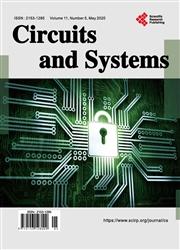Simulation of Space Charge Impact on Partial Discharge Inception Voltage in Power Busbars Dedicated to Future Hybrid Aircrafts
引用次数: 2
Abstract
Reducing greenhouse gases, saving energy resources and mass optimization require technological changes towards increasingly electric vehicles. At the same time, performance improvement of semiconductor and dielectric materials further promotes electronic components confinement, resulting in a significant increase of embedded power densities. In the particular case of future hybrid propulsion aircrafts, electrical power that intended to supply reactors would be converted through power electronics components mounted on power busbars and insulated by solid dielectrics materials. These dielectrics materials have to respond to various electrical constraints of use (HVDC), in spite of environment change of aircraft parameters such as low pressure, temperature and thermal cycles, humidity... Unfortunately, partial discharges phenomenon is the most problem within electrical insulation system (EIS). Based on a topological model of power busbars designed for power converters dedicated to hybrid aircraft, partial discharge studies were conducted by simulation in various charging conditions of a PTFE insulator. Simulation results, which focus on electric field thresholds criteria of partial discharge inception voltage in air, reveal a net sensitivity of a space charge accumulation and distribution on dielectrics behaviour even for low space charge density, depending on their location in dielectrics. Compared to the behaviour observed with implanted homocharges, when by increasing homocharges density from 0.5 C/m3 to 2 C/m3 we observe a decrease of electric field by 450%, simulation results show a highest risk of partial discharge inception when heterocharges are accumulated inside dielectrics. Their accumulation increases the electric field in triple points beyond electric field thresholds of partial discharge inception in air. The simulated electric field reaching 22 kV/mm with only 2 C/m3 of heterocharges density accumulated in dielectric/busbars interfaces.空间电荷对未来混合动力飞行器电源母线局部放电起始电压影响的仿真
减少温室气体排放、节约能源和大规模优化需要对越来越多的电动汽车进行技术变革。同时,半导体和介电材料性能的提高进一步促进了电子元件的限制,导致嵌入功率密度的显著增加。在未来混合动力推进飞机的特殊情况下,旨在为反应堆供电的电力将通过安装在电源母线上并由固体电介质材料绝缘的电力电子元件进行转换。这些电介质材料必须响应各种使用的电气约束(HVDC),尽管飞机参数的环境变化,如低压、温度和热循环、湿度。。。遗憾的是,局部放电现象是电绝缘系统中最常见的问题。基于为混合动力飞机专用功率转换器设计的功率母线拓扑模型,通过模拟PTFE绝缘体在各种充电条件下的局部放电研究。模拟结果集中于空气中局部放电起始电压的电场阈值标准,揭示了即使在低空间电荷密度的情况下,空间电荷积累和分布对电介质行为的净敏感性,这取决于它们在电介质中的位置。与用注入的均电荷观察到的行为相比,当将均电荷密度从0.5 C/m3增加到2 C/m3时,我们观察到电场减少了450%,模拟结果显示,当异质电荷积聚在电介质内部时,局部放电开始的风险最高。它们的积累增加了三个点的电场,超过了空气中局部放电开始的电场阈值。模拟电场达到22 kV/mm,在电介质/母线界面中仅积累了2 C/m3的异质电荷密度。
本文章由计算机程序翻译,如有差异,请以英文原文为准。
求助全文
约1分钟内获得全文
求助全文

 求助内容:
求助内容: 应助结果提醒方式:
应助结果提醒方式:


